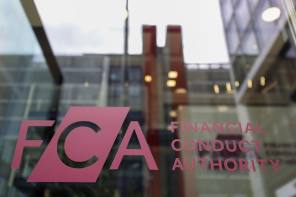

That old stalwart, the cash Individual Savings Account (Isa) was the go-to product for tax savvy savers for many years since its introduction in April 1999 – preceded by the Tax Exempt Special Savings Account (Tessa). However, recent government initiatives such as the personal savings allowance (PSA) coupled with a drop in the rates on offer compared to non-Isa accounts, have led to a decline in their popularity.
Back in 1999, the cash Isa allowance was pretty pitiful – you could only deposit £3,000 per annum, less than half the total Isa allowance of £7,000. Over the years it has increased substantially, helped by the fact that in 2014 savers were able to use the whole of the Isa allowance for cash, not just half, which was a huge boost. Today the annual allowance stands at £20,000.
But, according to figures released recently by HMRC, the amount deposited into cash Isas fell substantially in 2015-16, by an unprecedented £18bn.
The introduction of the PSA means many savers no longer pay tax on the interest on their savings. This is because basic rate taxpayers can now earn £1,000 of interest in non-Isa savings accounts, tax free – while higher rate taxpayers can earn £500 per year tax free. Additional rate taxpayers do not receive a PSA.
While interest rates are low, the amount of savings needed to fully use the PSA is hefty. A basic rate taxpayer earning 1.20 per cent on an easy access account would need to have £83,333 to fully use the allowance over 12 months. A higher rate taxpayer earning 1.20 per cent on an easy access account would need to have £41,667 to completely use the allowance.
If they opted for a one-year fixed-rate bond, a basic rate taxpayer earning 1.83 per cent would need to have £54,645 to use all of the allowance, while a higher rate taxpayer earning 1.83 per cent on a one-year fixed rate bond would need to have £27,322.
Key points
- Cash Isas have seen a decline in savings.
- Choosing an Isa right now will see them earning less interest.
- Isa rates have been increasing steadily this year.
While it is a big amount at the moment, you can see how just a small increase in rates would mean a far lower deposit would use up the PSA. As a result, there is still a place for cash Isas, as the interest earned on these will continue to be tax free, regardless of the amount deposited and what happens to interest rates in the future.
The other problem is that, at the moment, there is a gap between fixed-term Isa rates and the non-Isa equivalents – with Isas coming out as the losers.
This gap means that for some savers, choosing an Isa now will see them earning less interest even if they have fully used their personal savings allowance and are therefore paying tax on some of the interest.
For example, one of the best one-year fixed rate bonds is currently paying 1.83 per cent gross/annual equivalent rate (1.46 per cent net for a basic rate taxpayer, or 1.10 per cent for a higher rate taxpayer). The best one-year fixed-rate Isa, on the other hand, is paying 1.31 per cent tax free. In this example, someone who does pay basic rate tax on some of their savings interest and would therefore normally look to shelter as much as possible in a cash Isa, would actually be better off with a fixed-rate bond even after allowing for the tax.
It is easier for higher rate taxpayers, as the Isa rate is better than the net rate on the bond, but it does illustrate the point that it is no longer a straightforward decision for savers when deciding whether to use an Isa or not. This is disappointing. Isas have been a friend of the saver over the years, but it feels like deposit-takers are turning them into a second-class option.
Having said this, Isa rates have been increasing steadily this year – the best-buy one-year fixed rate Isa is now 25 per cent higher than at the beginning of the year and for a three-year term, the best-buy cash Isa is now 60 per cent higher than it was in January 2017.
This is because more challenger banks have entered the Isa market, driving some competition. There is still some way to go to make cash Isas the go-to product again, but it is all heading in the right direction.
If you had saved the maximum into a cash Isa since their introduction in 1999, you would have saved £121,500 and even if this had only earned a rate equivalent to the bank of England base rate, your money could have increased to almost £134,000 – and all the interest is tax free. So, if you deposited this into the best one-year fixed rate Isa, you could earn £1,755 tax free, in addition to the tax free interest you could earn by using your PSA.
Plus, for those looking to reduce the risk on their investment portfolio, the cash Isa is a valuable possible destination – allowing the sale of stocks and shares, while retaining the invaluable tax wrapper.
While it might be a tough decision without knowing what will happen to Isa rates in the future, by choosing to ignore your Isa allowance, you could end up paying more tax on your savings than you need to.
Of course, this would all change if Isa rates were to become more competitive. They would once again become a no-brainer for taxpayers, especially those already fully using their personal savings allowance.
Remember, if you do not use your Isa allowance before the end of the tax year, you lose it forever. The secret is to find the best rates available to make that tax-free allowance work as hard as possible.
All rates are correct as of 15 September 2017.
Anna Bowes is a director of Savings Champion



